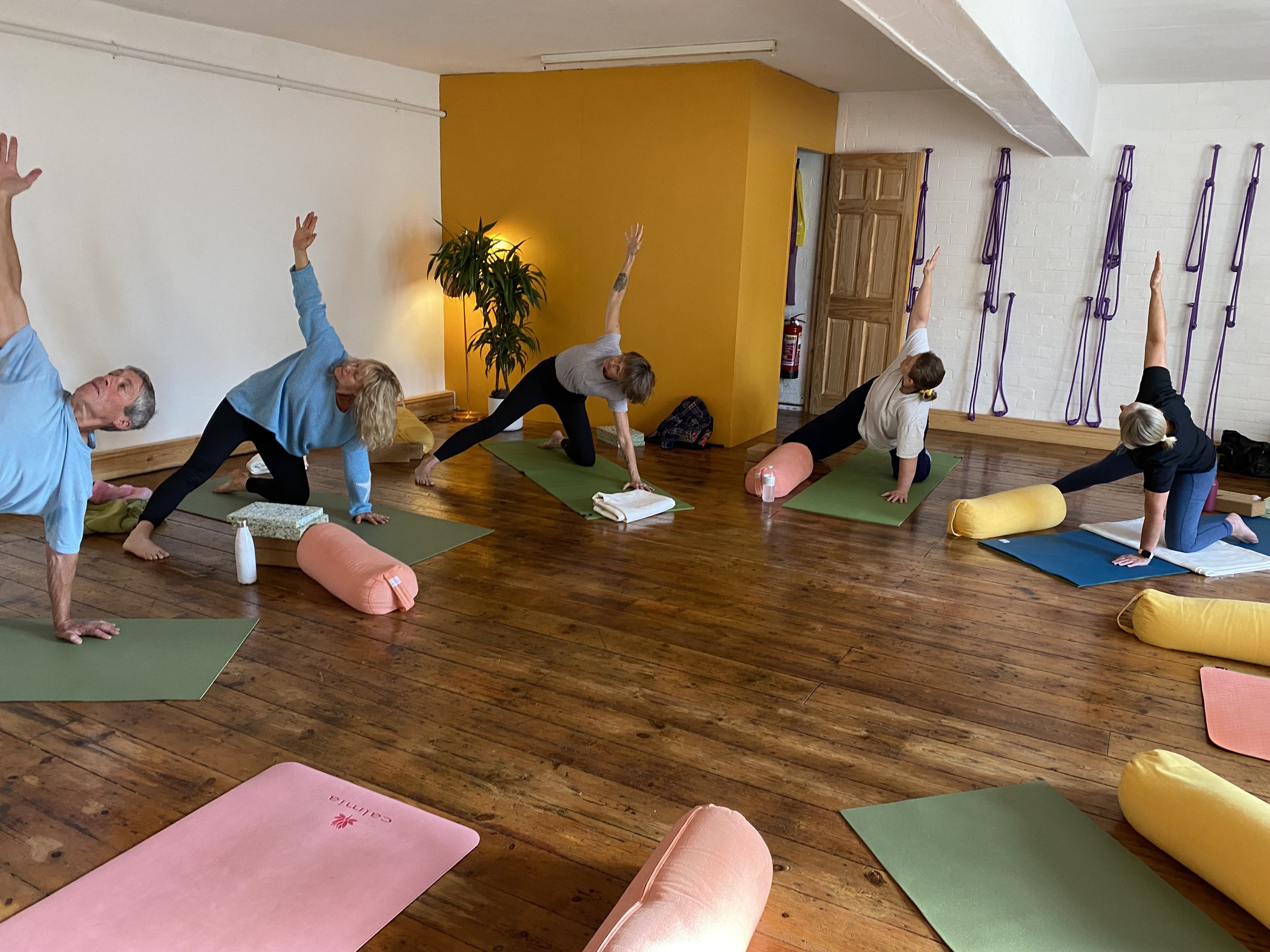Patanjali’s Yoga Sutras
Patanjali’s Yoga Sutras were written around the 3rd Century BCE and is the primary text for the practice of Raja Yoga. The text is not uniform so the sutras could have been written by more than one person – this is unknown.
Although the word ‘Raja’ means king, 'Raaj' actually refers to control. In Raja Yoga you control your body, breath, mind, desires to remove the ego and reach the state of samadhi.
The original text is written in Sanskrit, the sutras are short and precise and therefore are open to interpretation as their meaning is not always clear.
There are 196 sutras divided into 4 chapters known as 'pada' - this translates as 'at the foot of' the way Yoga was originally taught, at the foot of a master.
The goal of Yoga is self-realisation and the sutras describe how this can be achieved.
Chapter 1 starts to describe how, it identifies what the thought processes are and the need to control both the mind stuff and the ego-sense (I am ness).
Chapter 2 contains focuses on the practical application of Yoga, the obstacles (kleshas). The eight limbs (steps) of Yoga towards self-realisation are introduced and the first five of these are presented and explained; yamas, niyamas, asana, pranayama and pratyahara, these first five are explained as external practices.
Chapter 3 starts with a definition of the last 3 of the 8 limbs, dharana, dhyana and samadhi – these are described as internal practices. These three techniques together are named as the practice of samyana (3.4).
The sutras then continue with a description of the stages of samadhi and the siddhis that can be obtained through the practice of samyana.
Chapter 4 is primarily concerned with how to progress from our birth situation to kaivalya by overcoming asmita – I-am-ness. Asmita is described as the element that creates and controls citta, and all actions done in this state will leave deposits which need to be removed by total detachment in order to move forward on our Yoga path.
The first four sutras of Patanjali outline the key purpose of Yoga, and the remainder of the sutras provide a practical manual that guides the student to self-realisation.
1.1 Atha yoga-anushasanam
Atha means “now’ - the sutras begin with this word
It is now we start, not sometime in the future, in our lives right now
Yoga-anushasanam – the instruction of Yoga
Now begins the instruction of Yoga – it is a very direct statement – we need to start practicing now
1.2 Yogas citta vritti nirodah
This is Patanjali’s goal of Raja Yoga. To break this down:
- Yoga means union, to join
- Citta relates to the sum total of the mind, and this includes the three elements of the mind “manas, buddhi and ahamkara” mentioned in the Gita, the sensory mind, the intellect and the ego respectively.
- Vritti refers to the thoughts that continually come into the mind
- Nirodah means stopping, restraining
This verse simply states the purpose of Raja Yoga is that to achieve union of the Self (individual consciousness) with the Divine (supreme consciousness) it is necessary to control the thought waves in the mind.
1.3 Then the Seer (Self) abides in its own nature
When the mind is quiet, as in 1.2, we become who we really are, pure consciousness.
1.4 Otherwise the Seer (Self) identifies with our thoughts
When the mind is not quiet, there are still thought waves (vrittis) and our self identifies with these thoughts and we become what we think we are. The real self is then hidden behind these thoughts.













